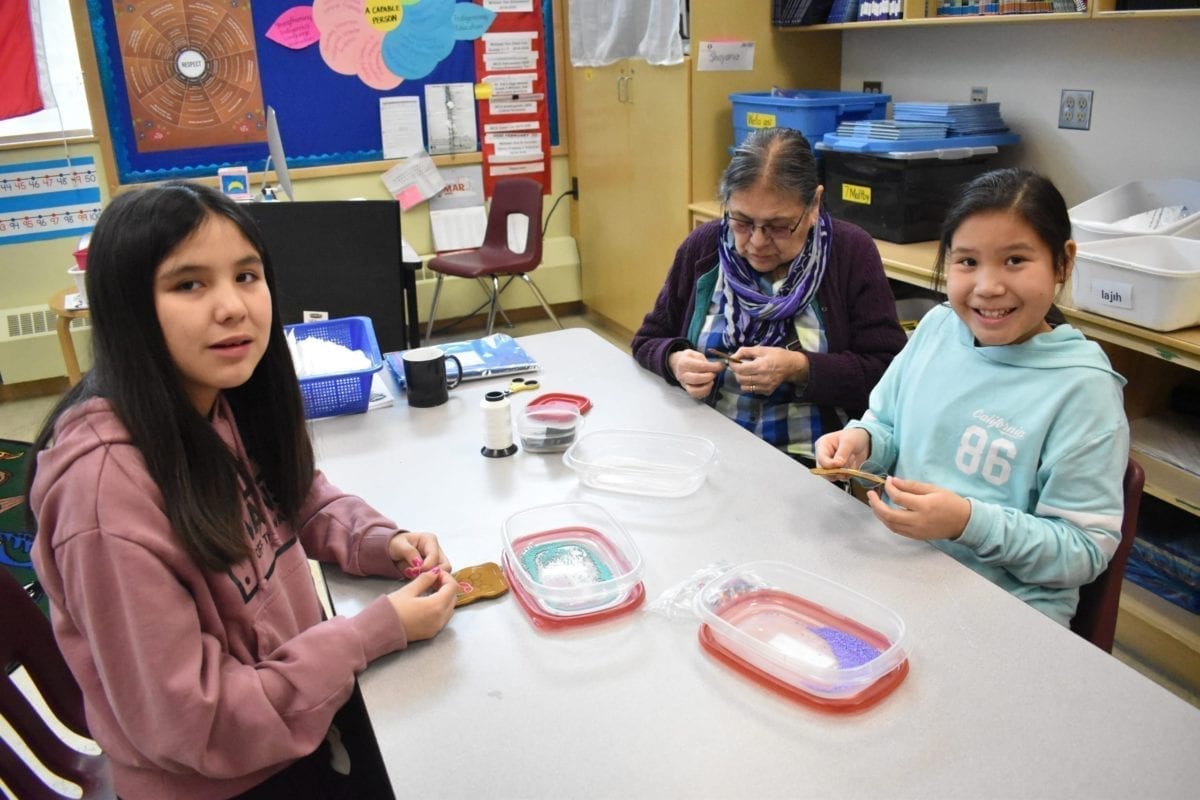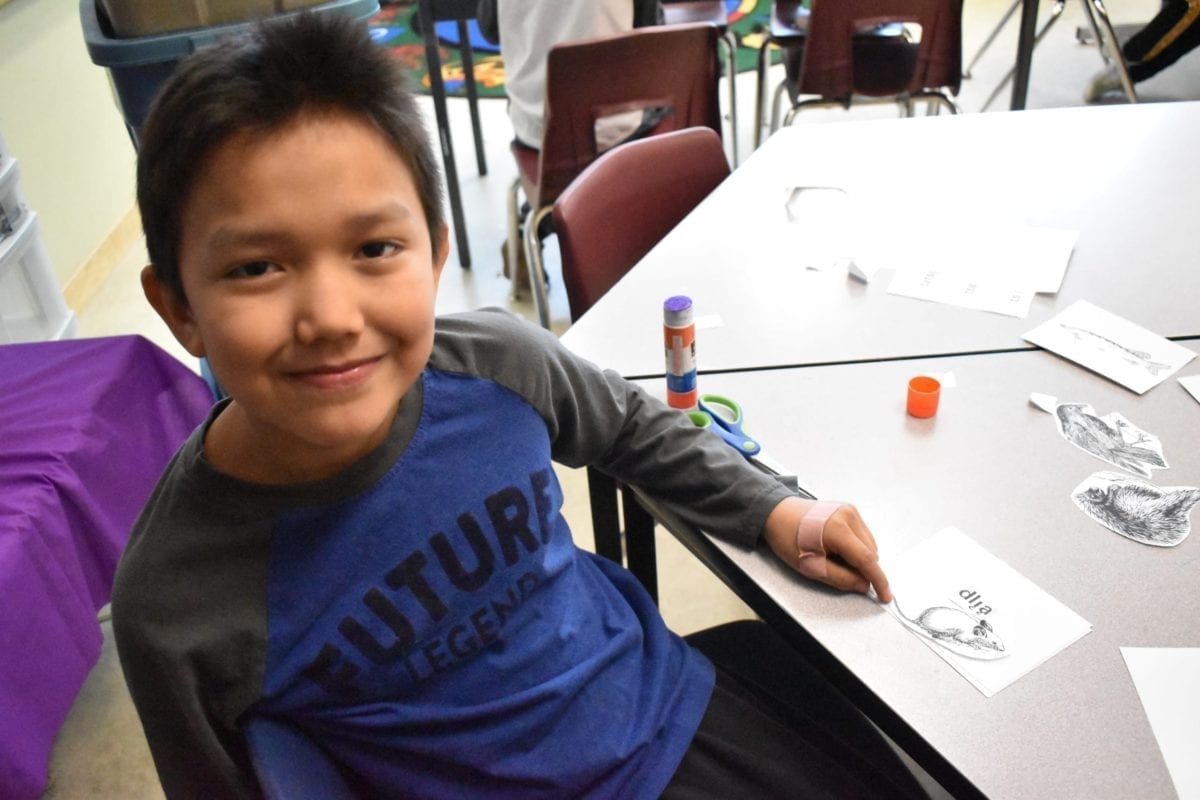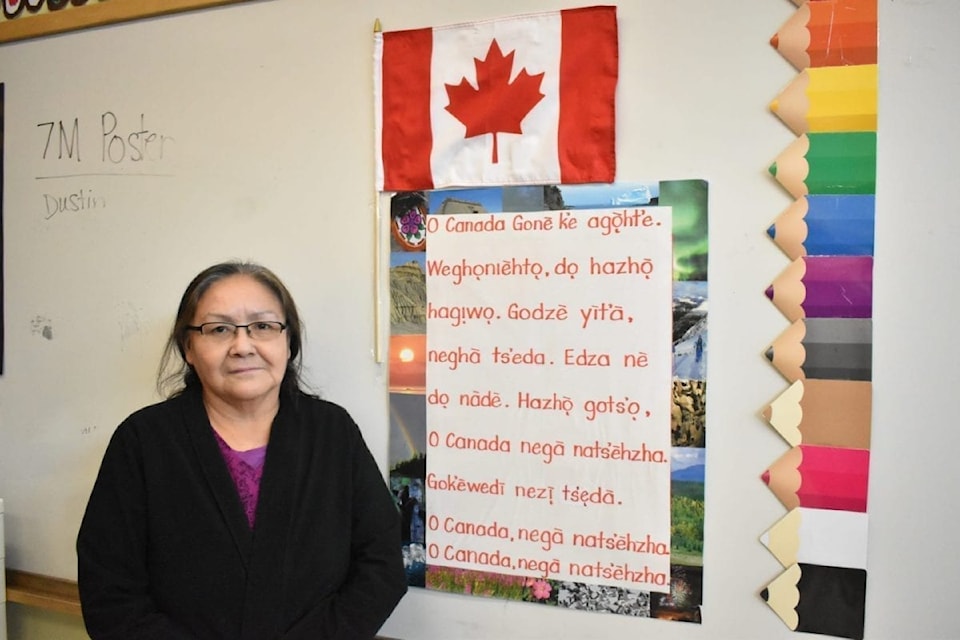The Auditor General's report on education in the territory released in February painted a dismal picture of Indigenous language education.
“After our audit in 2010, the department acknowledged its need to review its policy for Indigenous language and culture-based education. It completed this review in 2014, which found that its model was not leading to fluency for Indigenous students,” the report noted.
The numbers of Indigenous language teachers in the territory, relative to the total number of teachers offers one explanation for the low educational results with the territory's nine Indigenous languages.
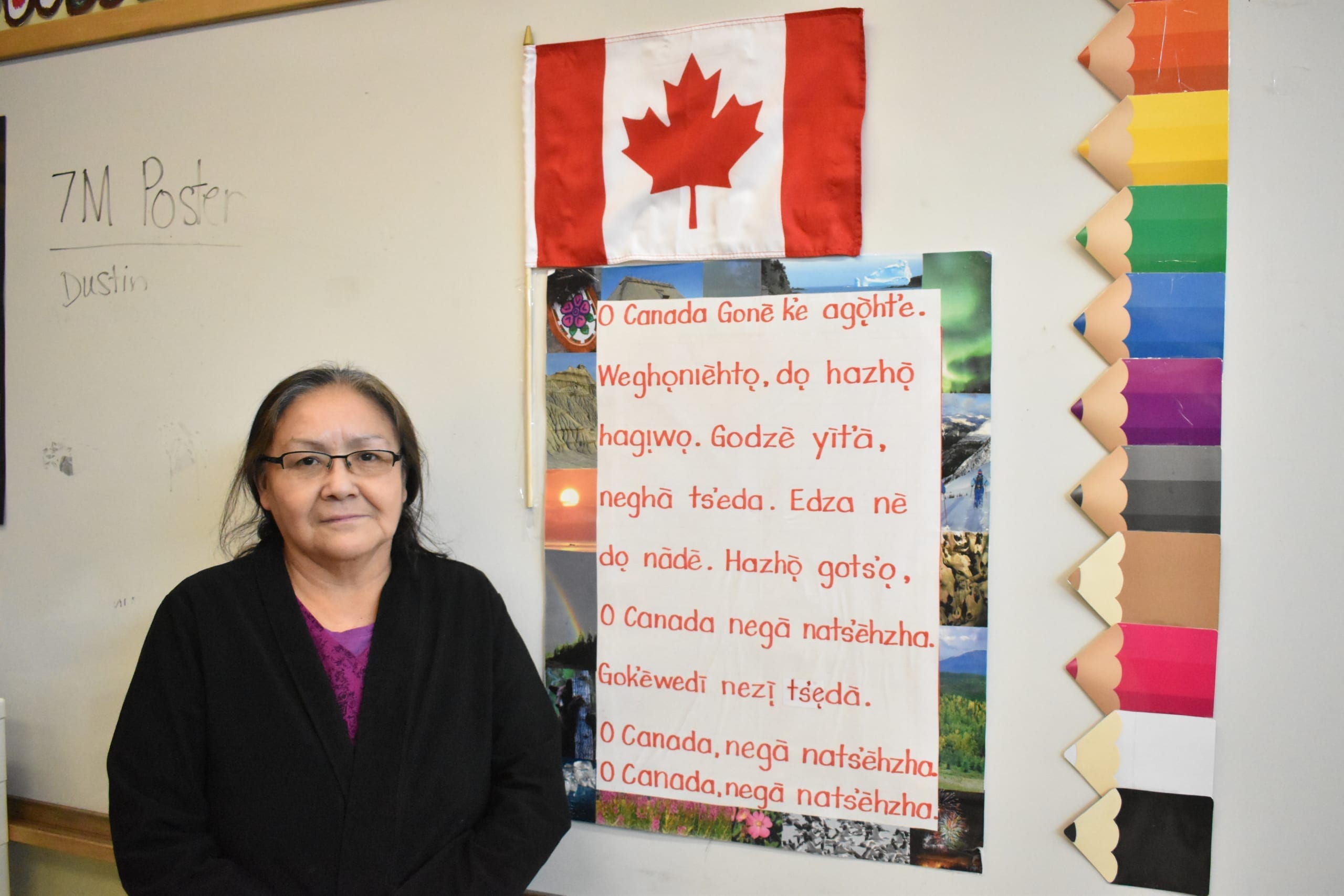
According to an NWT Bureau of Statistics report from 2014, the most recent year for which official language proficiency data is available, the Indigenous language with the most speakers over 15 years of age is Tlicho, which had 2,235 speakers.
Next is South and North Slavey, which had 1,443 and 1,081 speakers respectively.
Inuvialuktun had 601 speakers, Chipewyan 562, Gwich'in 335, Cree 275, Inuktitut 201 and Inuinnaqtun had 195.
Compared to the report's findings in 1989, proficiency has declined in some languages, but it has also increased modestly in more than half of them.
Language education by the numbers
There are 631 teachers working across the territory and of those 70 are Indigenous language educators, Meagan Wohlberg, spokesperson of the Department of Education, Culture and Employment (ECE) told News/North.
Of that group, 53 are teachers (mostly full-time and some part-time) and the rest are educational assistants and Elders who help out in classrooms.
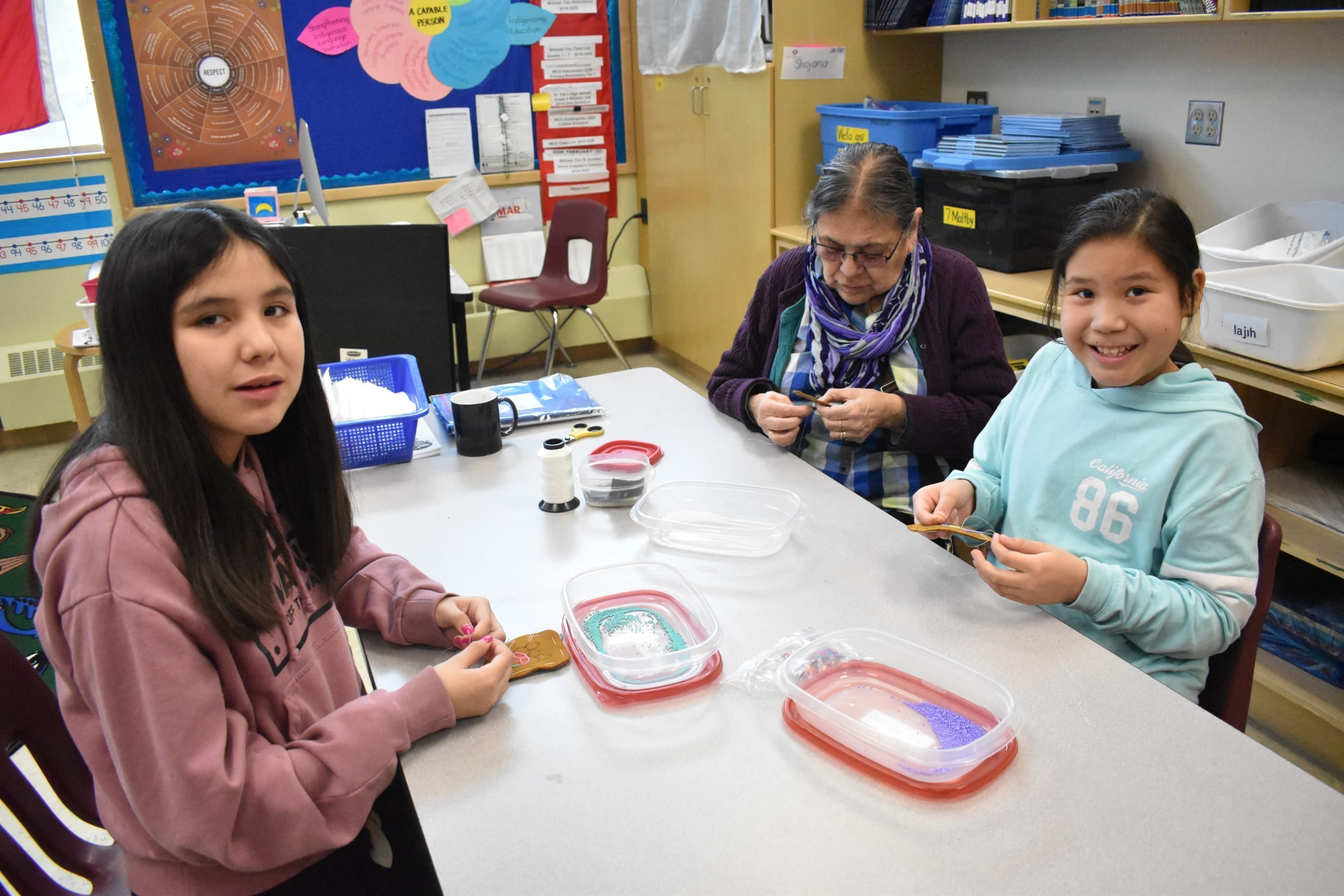
The seven main regional boards of education are responsible for the teaching programs of the territory's Indigenous languages.
Yk 1 in Yellowknife has three teachers teaching Wiiliideh Yatii, a dialect of Tlicho. It is offered from Junior Kindergarten up to Grade 11, said Scott Willoughby, Indigenous Education Coordinator with Yk 1.
Yellowknife Catholic Schools (YCS) has one Wiiliideh Yatii teacher and offers the program from JK to Grade 8, with a Grade 9 course recently being added, said YCS superintendent Simone Gessler.
In the South Slave Divisional Education Council (SSDEC) there are 16 Indigenous language teachers. Six teach South Slavey, two teach Cree and eight teach Chipewyan, said SSDEC spokesperson Chris Talbot.
All three languages are taught from JK-Grade 9 in the South Slave but only certain schools teach each one. Students can continue studying the languages as electives in Grades 10, 11 and 12.
In the Dehcho region, seven teachers are employed teaching South Slavey from JK to Grade 9, said Dehcho Divisional Education Council superintendent Philippe Brulot.
North Slavey is the Indigenous language taught in schools in the Sahtu region, with seven full-time teachers and one half-time teacher, said the divisional education council superintendent Renee Closs.
They work in five schools in the region and teach the language from JK to Grade 9. Colville Lake School offered 15 and 25-level courses in South Slavey last year and Chief Albert Wright School in Tulita has piloted those courses since 2012.
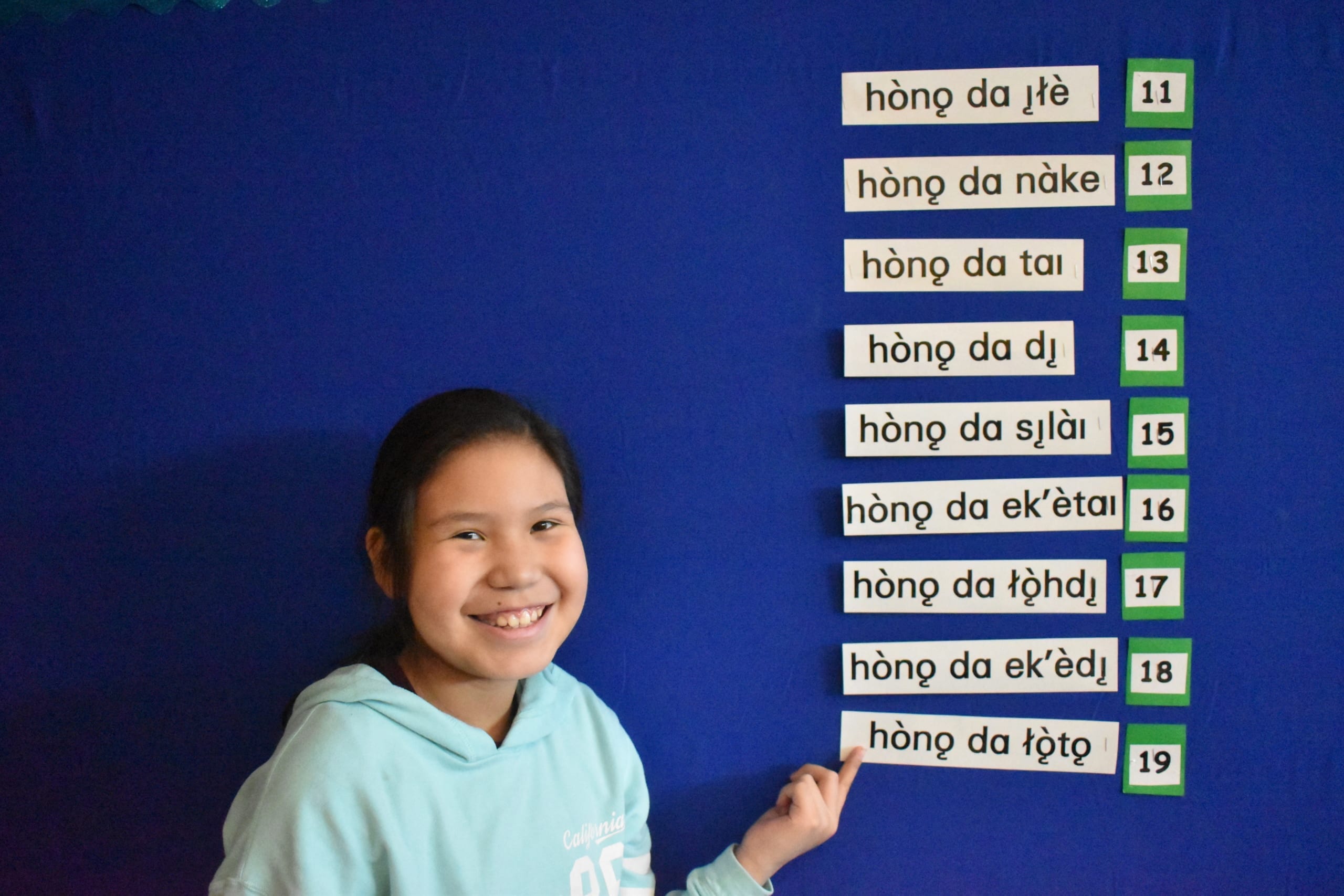
“The current students have the necessary credits so it will likely be offered to a new cohort in September. We anticipate all schools will offer the 30 level in Sept 2020, pending approval of the course by ECE,” said Closs.
Up in the Arctic, there are 13 full-time teachers and one part-time instructor in the Beaufort Delta Education Council (BDEC), said superintendent Frank Galway.
Gwich'in, Inuvialuktun and Inuinnaqtun are taught in the region's nine schools.
In the Tlicho region, the Tlicho Community Services Agency (TCSA) employs eight teachers at the schools in Wekweeti, Gameti, Whati, Edzo and Rae/Behchoko.
Tlicho education is offered from kindergarten to Grade 12, said Linsey Hope, director of education with TCSA.
The relatively low number of language teachers spurs questions about whether it's enough, but teachers in all fields would ask the same question, said Angela James, director of the Indigenous Languages and Education Secretariat with the ECE.
“We can always have more, but especially with Indigenous language education,” she said. “In the last century we were embarrassed and punished and made to feel ashamed of our languages. In this century the tide is turning and we're welcoming the languages (and) coming to revitalize the languages. It's a very challenging endeavour since many of the speakers experienced the residential school system.”
Pursuing fluency
All of the seven education boards who spoke with News/North said their students have not yet achieved fluency through their language programs.
However, several said they have been piloting the new Our Languages curriculum developed by the ECE, which aims at greater proficiency.
“The curriculum focuses on students’ attainment of five language learning levels: Emergent, Beginner, Intermediate, Advanced, and Capable by the end of Grade 12. For a student to be fluent they will also need to use their Indigenous language at home,” an ECE website said.
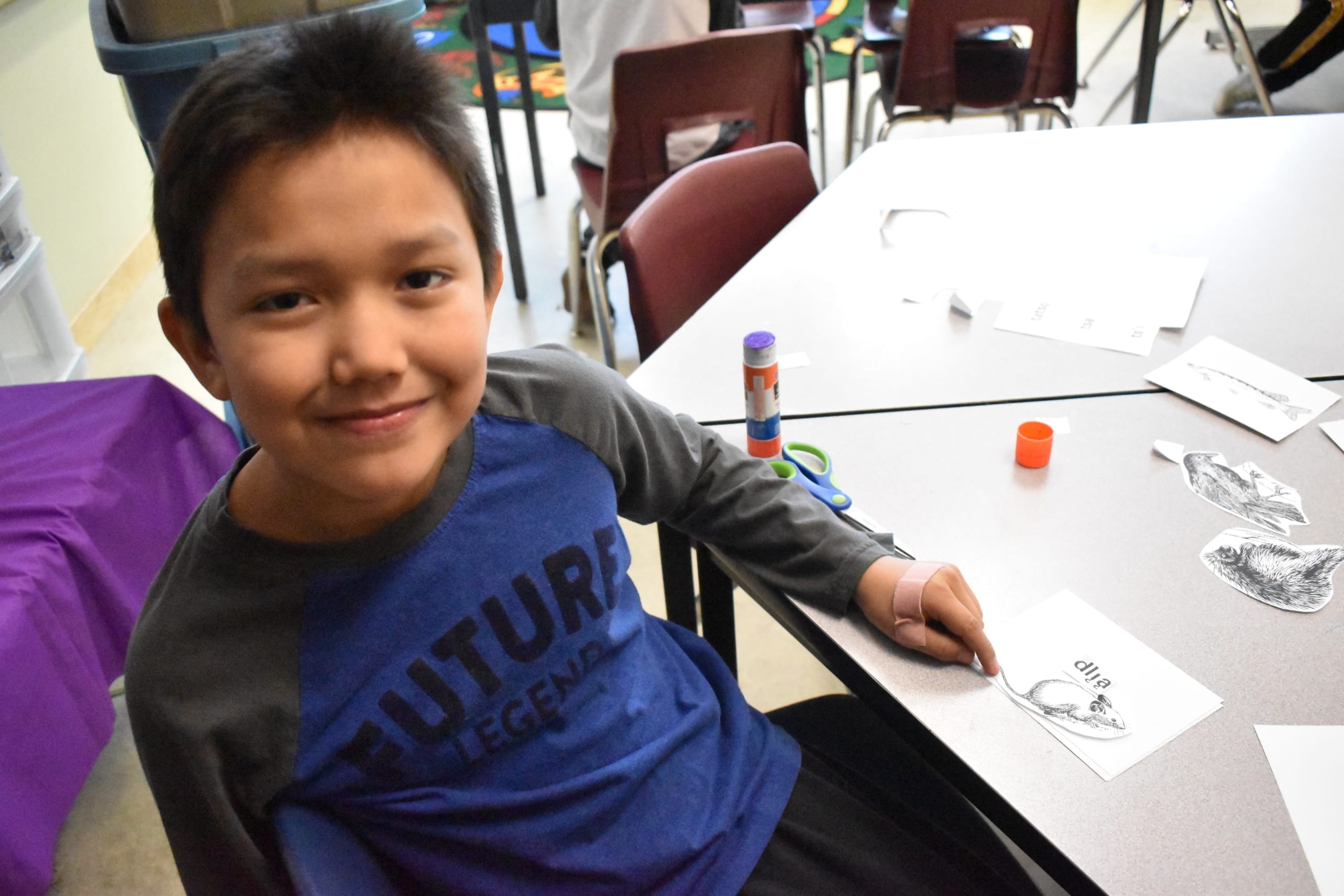
“Children from each of the schools were assessed using a draft Oral Proficiency Scale by a fluent speaker who is not their teacher. These baseline data results will be used to set goals for increasing language proficiency.”
But while that curriculum should be commended, it's not perfect, said James.
“It's still a core curriculum. You don't reach fluency in a core program. I must say that in the NWT we have a lot of work to do to move through those (proficiency) levels. We're playing catch up on the language revitalization and the majority of our students are still at the emergent level.”
Seeds of change
While achieving widespread fluency in the languages appears to be a difficult task with the relatively small number of teachers, there are efforts afoot to intensify how the languages are taught.
The TCSA stands out as the only education authority in the NWT to offer immersion programs in an Indigenous language, with two teachers at Elizabeth Mackenzie Elementary School in Behchoko teaching two JK to Grade 2 immersion courses.
“We are very proud of the program. It takes a lot of team effort to develop songs, phonologically appropriate resources, books, and culturally relevant materials. Our team has seen an increase in the Tlicho language skills in the immersion students who move to English classrooms in Grade 3 (but continue Tlicho in their Tlicho Yati course like most students do in core French courses),” said Hope.
The Sahtu Divisional Education Council hopes to begin a kindergarten/JK immersion program in at least one community for next school year.
“This would be a pilot program with the desire to add more immersion classes in future years,” said Closs.
Yk1 also aims to bring in immersion programs in the future, but as Willoughby said “it's just a matter of getting teachers and students to that level.”
A recent, encouraging sign of change came in the $150,000 of federal funding for a new Inuvialuktun immersion program that was announced on March 2 by MP Michael McLeod.
The program is to be developed through the combined efforts of the BDEC, experts at Aurora College and with Inuvialuit Elders.
The development of the program and curriculum is set to begin shortly and it is hoped it can begin next year, said Elizabeth Kolb, spokesperson for the Inuvialuit Regional Corporation (IRC).
“IRC would like to see the first intake of students in a year but there is a lot involved in ensuring funding is adequate and all comes together. Proposals and advocacy at all levels of government for Inuvialuktun is ongoing,” Kolb said.
“The big/future idea is to ensure there are fully fluent, fully qualified individuals so that we can create future teachers across the region to revitalize language with as many and all students. Those in this initial program will gain a Bachelor of Education to follow two years of full time Inuvialuktun at college level.”
For James, it is “without a doubt” that more immersion programs are needed, but it's not a simple goal.
“It's a catch 22. Immersion is the most effective strategy, and so are Master Apprentice Programs. But we have to have enough Indigenous language speakers who want to be teachers and we have to have all the subject areas be in the language. It takes time (and) takes the whole community to make sure we're successful in this area.”
